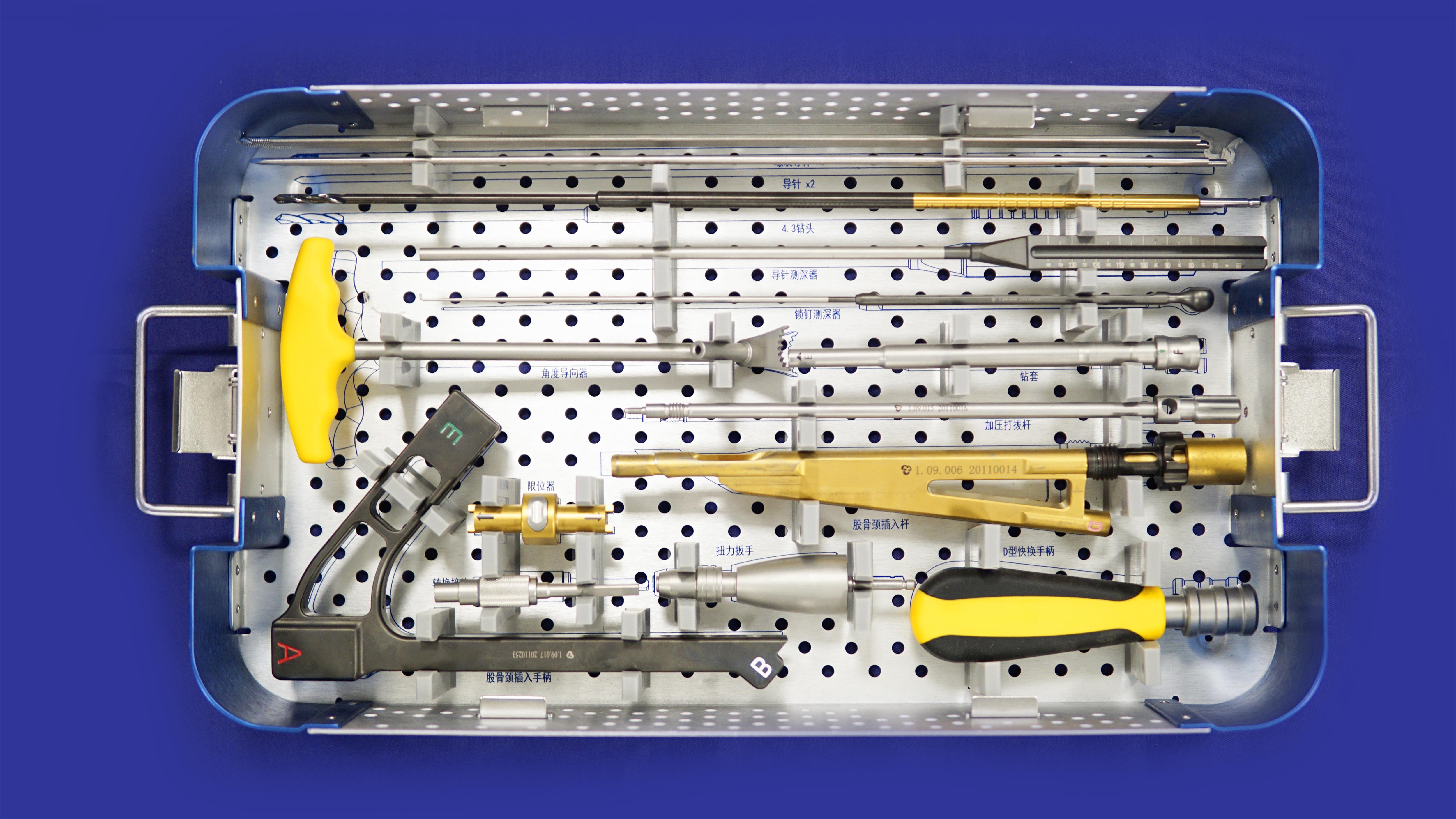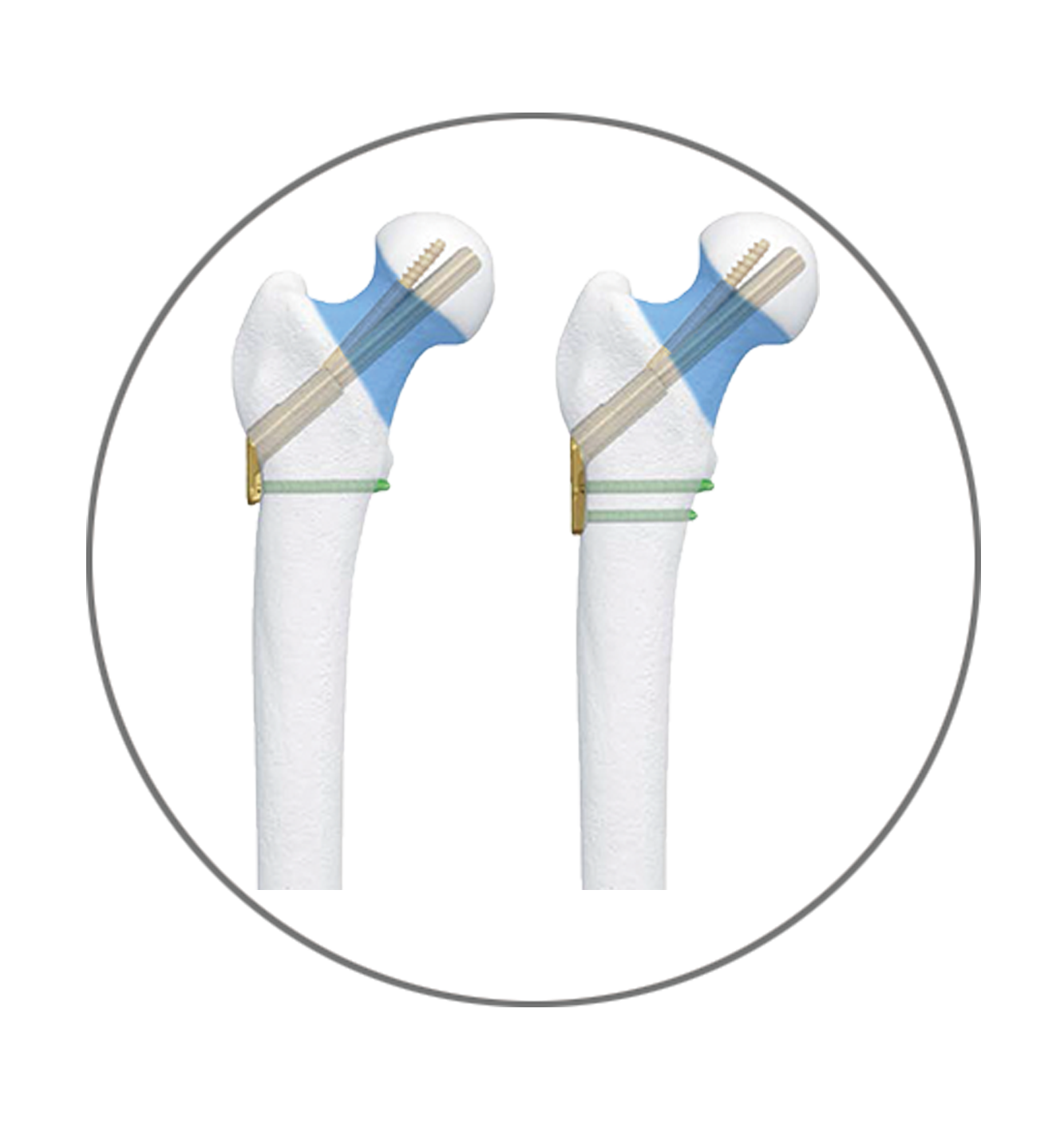1. Before using this product, the user must carefully read the "Orthopedic Internal Fixation" and related information recommended by AO organization, and be skilled in the operation process of this product, and should strictly follow the instruction manual.
2. In the operation, the fracture end should be well repositioned and the channel should be established, the guide pin should be placed, the femoral neck plate and the femoral neck power rod of suitable specifications should be implanted along the guide pin in turn, and finally the femoral neck anti-rotation screw should be screwed in and compressed to the ideal position.
3. Transport and store the implant carefully. Crashing, bending, or scratching the implant will significantly reduce the strength and fatigue life of the implant and cause the implant to break. If the implant is found to be deformed before use, stop using it. .
4. Implants of different specifications must be prepared during the operation. The correct selection of implants during surgery is extremely important. If the right size of the implant is selected, the success rate of the surgery will increase. Conversely, incorrect selection, installation, positioning, and fixation can cause abnormal pressure and shorten the life of the implant.
5. The implant is a device used to bear the load and maintain the orthopedic sequence until the normal physiological structure is formed. If the formation of the normal physiological structure is delayed or does not heal, the implant will bear additional and repeated loads, which will eventually lead to the implant loosening, bending, fatigue fracture, etc.
6. X-ray examinations should be done regularly in the first year after surgery, and careful comparisons should be made to check whether there are changes in the position of the implant, loosening, bending, fracture, and signs of delayed or non-union. If these signs appear, the patient needs to be closely observed to assess the possibility of further deterioration, and consider reducing activities or even early repair.
7. Carefully advise the patient that postoperative care and the patient's willingness and ability to comply with the doctor's advice are two important factors for successful fracture healing. It is especially important for the treatment of unstable fractures. It is important for the patient to realize that the limitations of the implant and physical activity and weight or weight bearing may cause the implant to loosen, bend and break before the bone heals; the patient should also understand the metal implant, It is not as tough as normal healthy bones, and the implants cannot or cannot restore the flexibility, strength, reliability or durability of the bones the same as normal bones. Before the bones are fully healed, even under normal stress and weight bearing conditions, fractures will occur and cause the need to be replaced later. Patients can not move frequently and are too tired, and uncooperative patients should limit their activities appropriately. Smoking patients should be informed that smoking will increase the incidence of bone graft non-fusion.
8. After the bones are completely healed, the implants will also loosen, break, and corrode. Therefore, one year after the operation, the X-ray shows that the fracture is completely healed, and the implants can be taken out. Failure to take it for more than 1.5 years may cause the following complications: implant failure, corrosion, soft tissue reaction or pain, displacement causing damage to soft tissue, internal organs, nerves and joints; postoperative trauma, causing additional risk of injury ; Difficult to remove the implant; pain or uncomfortable sensation caused by the presence of the implant in the body; increase the risk of infection and reduce the bone's due capacity.
9. When removing the implant, the risks brought by the second operation should be considered. Therefore, before the operation, preparations should be made to prevent another fracture.
10. The screws that fix the bone plate to the diaphysis must penetrate the contralateral cortex without bone defects.
11. If the fracture is accompanied by severe soft tissue swelling or extensive skin contusion, these complications should be cured first, and then a second-stage open reduction and fixation should be performed.
putting a temporary fixation pin to stable the fracture;
putting a guide pin and opening the proximal end;
putting a power bar and plate;
inserting a distal locking nail according to the guide of the positioning frame;
removing the temporary fixation pin.
- Orthopedic instrument set





